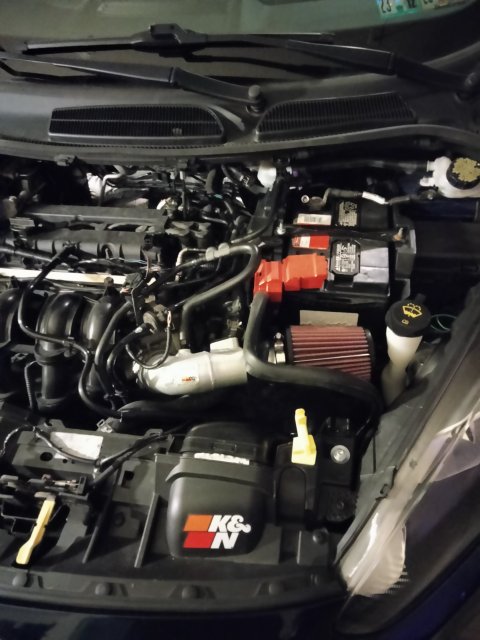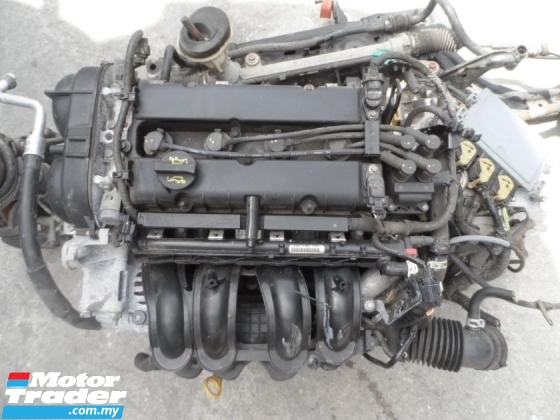The Role of a Quality Ford Fiesta Engine in Vehicle Performance
Discovering the Advancement of Engines: From Classic Layouts to Modern Marvels
The development of engine technology represents a substantial story in the background of innovation, marked by pivotal advancements that have actually constantly redefined transportation and industry. From the initial heavy steam engines that powered the Industrial Change to the introduction of internal burning engines that transformed wheelchair, each stage has added to higher efficiency and capability. Presently, the transition to electrical power signifies not just a technical shift but additionally a more comprehensive commitment to ecological sustainability. As we check out these turning points, one need to think about how the future of engine layout might unravel, testing our assumptions of power and performance.
The Birth of Engine Technology
The advent of engine innovation noted a critical minute in human technology, changing power conversion and transportation. The earliest engines arised from the demand to harness mechanical power for functional usage, leading to the development of gadgets that transformed numerous energy types right into movement. The principle of the engine can be traced back to old human beings, where straightforward makers, such as the waterwheel and windmill, made use of all-natural pressures to execute work. It was during the late 17th and early 18th centuries that considerable advancements started to materialize.
The growth of the inner combustion engine and the innovation of the steam engine catalyzed an extensive change in industrial capacities. These engines not just enhanced efficiency but additionally increased the scope of human flexibility, making it possible for unmatched transportation opportunities. The early prototypes laid the foundation for the mechanical world, assisting in the surge of industries and improving social structures.
As engine designs evolved, they progressed and included cutting-edge materials design principles, leading the way for modern-day growths - ford fiesta engine. The birth of engine technology ignited a relentless quest of efficiency and power, setting the phase for the dynamic advancement of transportation and industrial equipment that would certainly adhere to
Heavy Steam Engines and Their Influence

The heavy steam engine's influence was especially obvious in the transport sector (ford fiesta engine). Steam-powered locomotives facilitated the rapid activity of goods and people across substantial distances, successfully shrinking the geographical barriers that had formerly prevented trade and communication. Likewise, steamships changed maritime travel, allowing for quicker and extra dependable crossings of seas and rivers.
In sector, steam engines powered manufacturing facilities, making it possible for mass manufacturing and the rise of city facilities as centers of financial activity. This change not just modified labor dynamics however additionally added to the emergence of a consumer-driven society. Steam innovation promoted technologies in design and production procedures, laying the groundwork for future innovations in engine style. The tradition of steam engines is profound, reflecting a crucial minute in human ingenuity and the relentless pursuit of progression.
The Increase of Internal Burning
Often overshadowing vapor power, the increase of interior burning engines marked a transformative change in transportation and industry throughout the late 19th and very early 20th centuries. The growth of these engines, defined by their capability to burn fuel within the engine itself, allowed better efficiency and power compared to traditional heavy steam engines. Introducing inventors such as Nikolaus Otto and Rudolf Diesel played vital roles in refining engine styles, causing extensive adoption in autos, watercrafts, and commercial machinery.
The internal burning engine's compact size and relatively lightweight nature assisted in the emergence of personal automobiles, revolutionizing private wheelchair and reshaping metropolitan landscapes. By making it possible for faster travel and the reliable transportation of goods, these engines militarized economic development and cultivated globalization. The flexibility of gas choices, consisting of gas and diesel, better boosted their charm, permitting varied applications throughout various markets.
Regardless of the ecological problems that would later on occur, the initial appeal of interior combustion technology lay in its transformative capacity. As society embraced this advancement, the structure was laid for modern-day transport systems, establishing interior burning engines as a foundation of industrial improvement and life throughout the 20th century.
Improvements in Engine Effectiveness
As internal combustion engines ended up being indispensable to transport and market, the emphasis shifted towards boosting their effectiveness to satisfy growing needs for performance and sustainability. Innovations in engine layout, material science, and technology have actually significantly contributed to this evolution.
One significant innovation is the development of turbocharging, which allows for increased air consumption, leading to even more complete gas combustion and improved power output without increasing the size of engine size. Furthermore, variable shutoff timing systems have been applied to enhance engine efficiency throughout different RPM ranges, thereby boosting fuel performance.
The utilization of innovative fuel shot technologies, such as direct shot, has likewise played an essential duty. This method permits even more specific control over the fuel-air mix, advertising better burning and lowering emissions. Lightweight materials, including aluminum and composite elements, have actually been taken on to decrease total engine weight, leading to enhanced efficiency.
These improvements show a more comprehensive trend within the automobile sector, where the synergy between engineering development and ecological considerations drives the ongoing quest for greater performance discover this info here in internal burning engines. Because of this, modern-day engines are currently extra effective, cleaner, and effective than ever previously, leading the way for an extra lasting future in transport.
The Shift to Electric Power
With growing worries over ecological effect and nonrenewable fuel source dependency, the automotive industry is experiencing a substantial change in the direction of electrical power. This shift is driven by a combination of technological improvements, regulative pressures, and changing consumer choices. Electric automobiles (EVs) use a compelling alternative to standard inner combustion engines, flaunting minimized greenhouse gas discharges and lower operating expense.
The rise of battery modern technology has actually been a video game changer, with lithium-ion batteries coming to be extra effective and cost-efficient. Improved energy density and faster billing capabilities have actually made EVs a lot more functional for everyday usage. Additionally, governments worldwide are carrying out incentives and setting enthusiastic targets for eliminating nonrenewable fuel source lorries, therefore speeding up the fostering of electric power.
Major car manufacturers are spending heavily in study and development, causing the intro of a diverse variety of electric versions. This consists of not only guest cars however also industrial lorries and public transport options. As charging infrastructure expands and battery innovation proceeds to boost, the shift to electric power is poised to improve the vehicle landscape, promoting sustainability and advancement in the years to find. The future of transportation is electric, and the energy is undeniable.
Conclusion
The advancement of engine modern technology stands for a considerable trajectory of development that has profoundly affected transport and market. From the foundational vapor engines to the transformative inner burning engines, each advancement has actually added to improved flexibility and economic growth. The current change towards electric power highlights a vital commitment to sustainability, driven by advancements in battery technology. This ongoing evolution not only shows altering societal requirements however also highlights the possibility for a cleaner and more efficient future in engine style.
